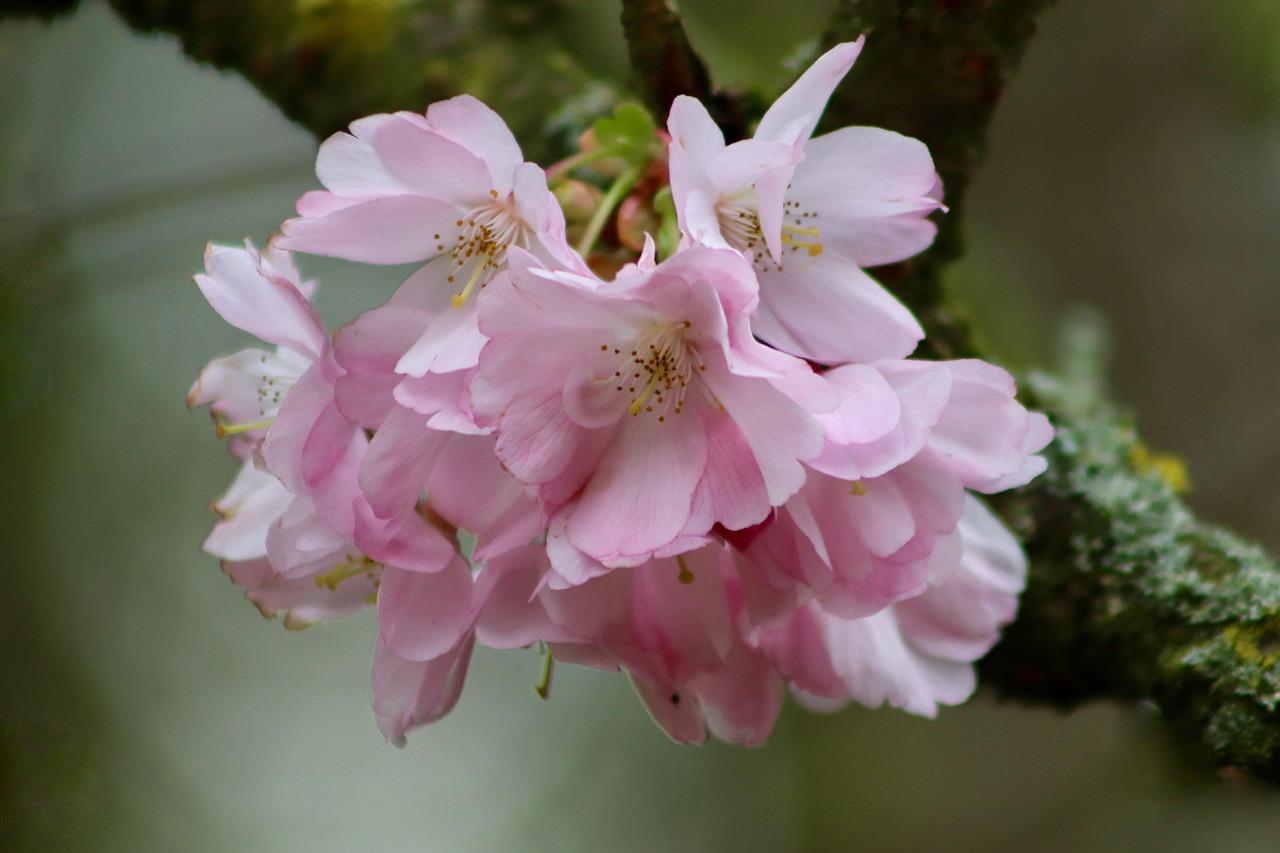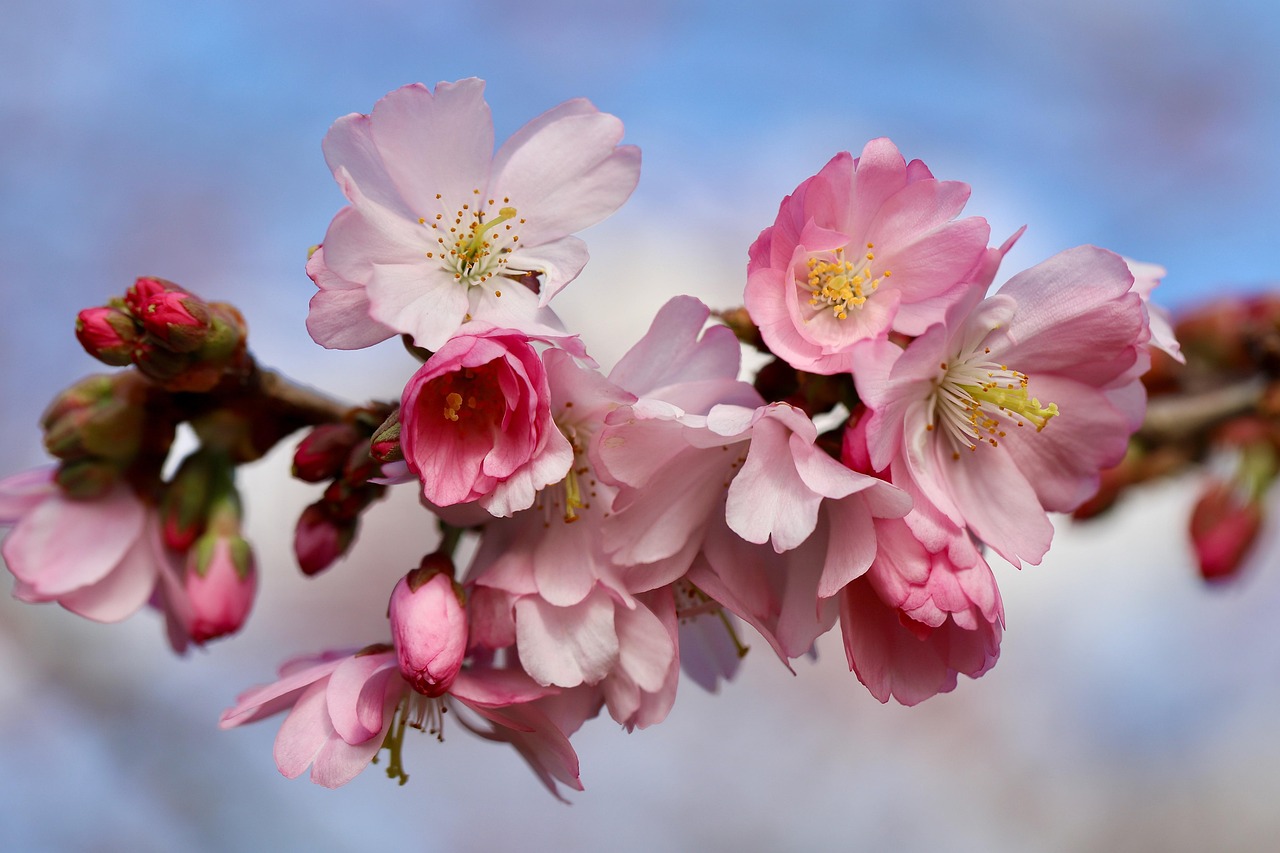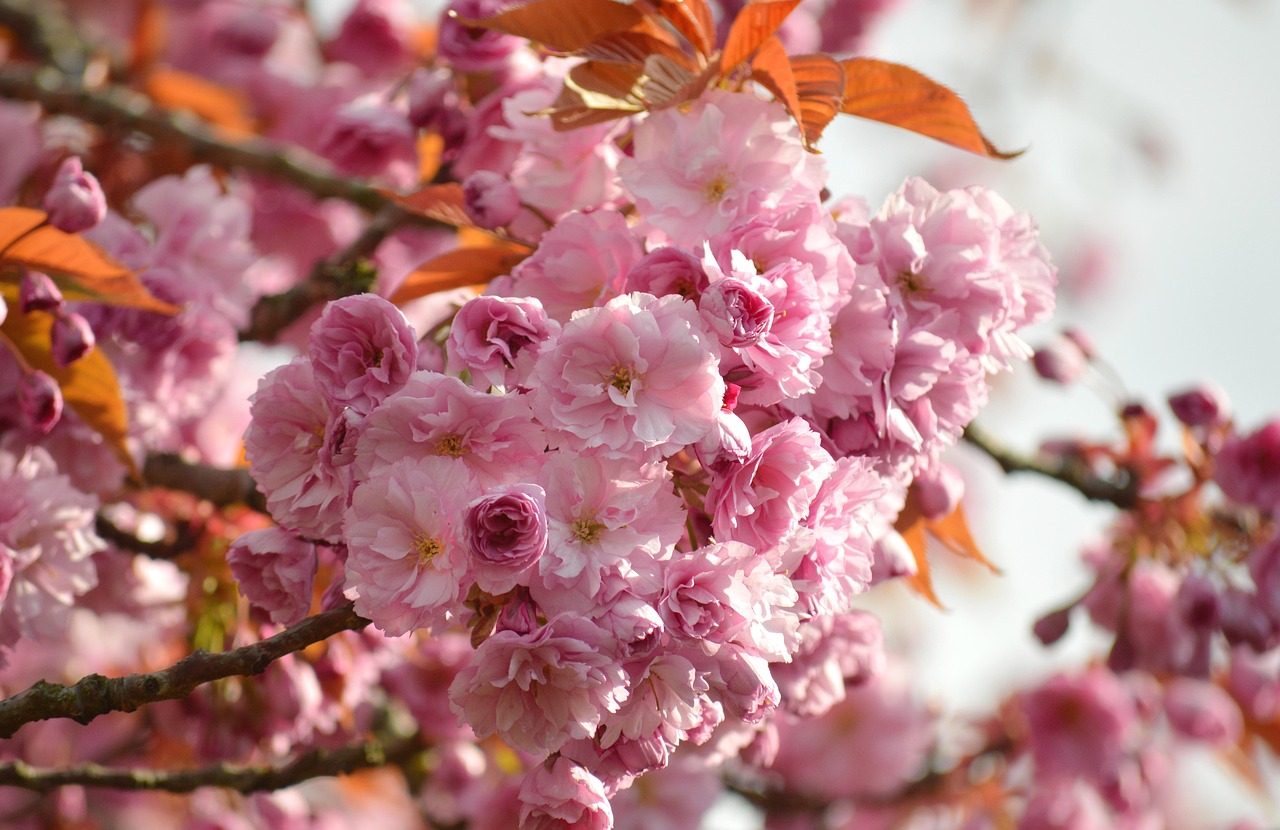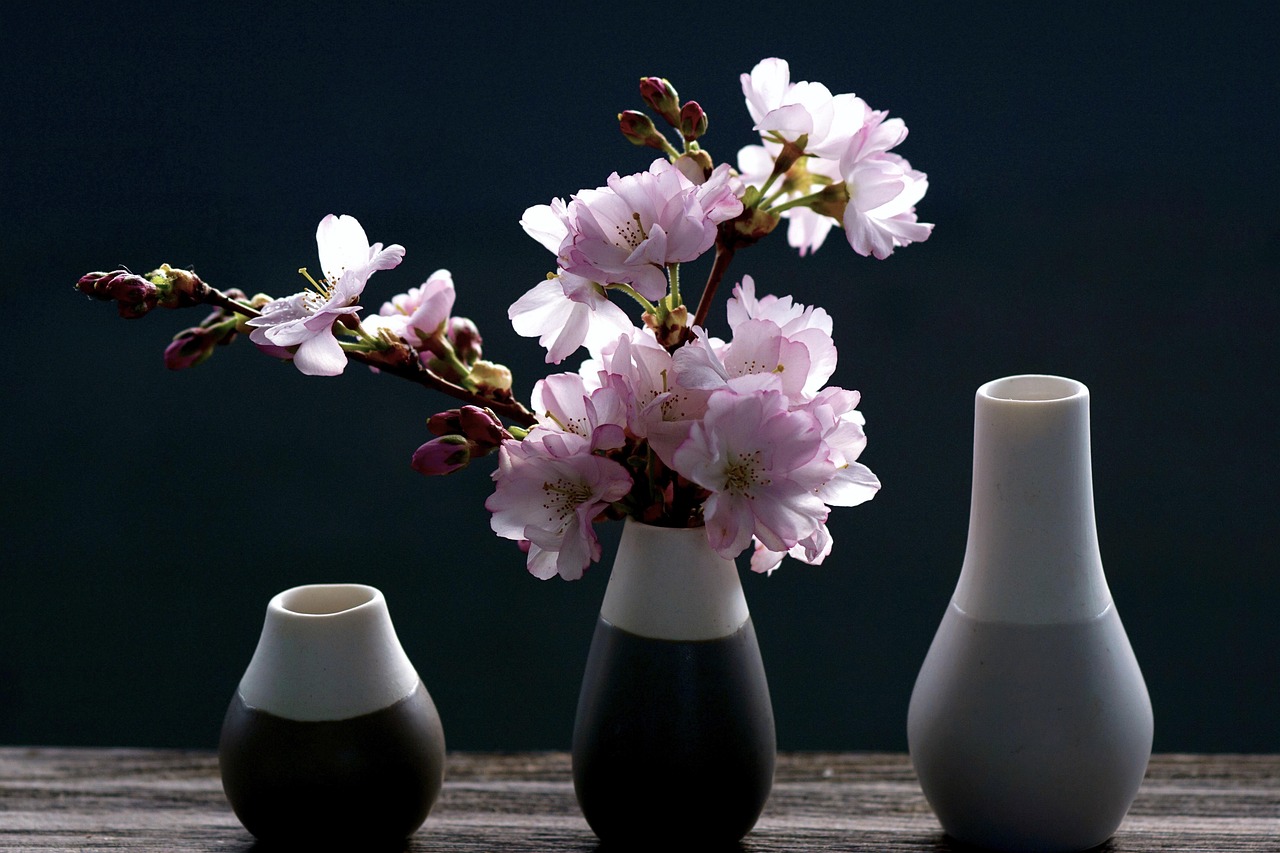Pruning cherry blossom trees is crucial for ensuring healthy growth and magnificent spring displays. By using the right tools and techniques, you can enhance blooming, promote growth, and maintain strong tree structure. Timing plays a key role—pruning in late winter or early spring yields the best results for vibrant cherry blossoms. Learn how to achieve stunning blooms effortlessly.
Cherry blossoms are celebrated for their stunning beauty and are a symbol of spring in many cultures. These trees can vary in size, shape, and flower color. However, to achieve that breathtaking bloom each year, proper care is vital. Pruning plays an important role in shaping the tree, encouraging new growth, and maintaining its health. Understanding the right techniques for cherry blossom pruning can significantly enhance the vibrancy of their spring displays.

Pruning cherry blossom trees is not just about aesthetics; it is also about ensuring the longevity of the tree. Proper pruning allows more sunlight to reach the inner branches, promoting better air circulation and reducing the risk of disease. Moreover, it helps to remove any dead or diseased wood, which can hinder the tree’s growth. The best time to prune cherry blossoms is typically in late winter or early spring, just before new growth begins.
Understanding Cherry Blossoms
Cherry blossom trees belong to the genus Prunus and are known for their beautiful flowers that bloom in various shades of pink and white. They are popular in parks and gardens across the United States and other parts of the world. Here are some key characteristics of cherry blossom trees:
| Characteristic | Description |
|---|---|
| Species | Common species include Yoshino, Kwanzan, and Weeping Cherry. |
| Height | Most cherry trees range from 15 to 40 feet tall. |
| Bloom Time | Typically bloom in March to April, depending on the variety and climate. |
| Flower Colors | Colors range from white to deep pink and even yellow in some varieties. |
| Fruit | Some varieties produce small fruits that can be edible or ornamental. |
When planning to prune cherry blossom trees, it is essential to know the specific variety you have. Different types may require slightly different approaches to pruning. For example, some varieties may bloom on old wood while others bloom on new growth. Understanding these differences will help you make informed decisions when it comes time to prune.

The Importance of Pruning
Pruning cherry blossoms is critical for several reasons. First and foremost, it encourages healthy growth and vibrant blooms. Regular pruning helps to maintain an open canopy, allowing sunlight to penetrate through the branches. This exposure is essential for flower production.
Additionally, pruning helps prevent overcrowding. When branches grow too close together, they can compete for resources like light and nutrients. This competition can lead to weak growth and fewer flowers. By thinning out branches, you can ensure that each one has ample space to thrive.
Best Practices for Pruning Cherry Blossoms
To achieve the best results when pruning cherry blossoms, consider these best practices:

- Timing: Prune during late winter or early spring before new growth begins.
- Tools: Use sharp, clean pruning shears or loppers for clean cuts.
- Technique: Focus on removing dead or diseased branches first.
- Aim for Shape: Maintain a balanced shape by removing inward-growing branches.
- Don’t Overdo It: Avoid heavy pruning; aim to remove no more than 20% of the tree’s canopy each year.
These practices will not only enhance the appearance of your cherry blossom trees but also contribute to their overall health. It is also important to regularly check for signs of disease or pests during the growing season. Early intervention can prevent small issues from becoming larger problems.
As you prepare for pruning, remember that knowledge about your specific cherry blossom variety will guide your efforts. Take your time to observe how each branch grows and where flowers appear. This understanding will lead to a thriving tree that rewards you with stunning blooms each spring.
Incorporating these techniques into your gardening routine will ensure that your cherry blossoms remain healthy and vibrant for years to come. As spring approaches, the anticipation of those beautiful blooms can motivate anyone to take up the shears and give their cherry trees the care they deserve.

Tools Required for Pruning Cherry Blossoms
Having the right tools is essential for effective cherry blossom pruning. Using appropriate equipment not only makes the task easier but also ensures clean cuts that promote healthy healing. Here are some of the basic tools you should consider:
- Pruning Shears: These are ideal for cutting small branches and stems. Look for bypass shears that provide a clean cut.
- Loppers: For thicker branches, loppers offer more leverage and are available in both manual and powered versions.
- Saw: A pruning saw is necessary for larger branches that are too thick for shears or loppers.
- Gloves: Protect your hands with durable gardening gloves to prevent injuries and blisters.
- Safety Goggles: Wearing goggles can shield your eyes from debris while cutting branches.
Before starting any pruning task, ensure that all tools are clean and sharp. Dull tools can damage the plant and lead to infections. Cleaning tools with alcohol or a bleach solution can help prevent the spread of diseases.
Pruning Techniques for Cherry Blossoms
There are several techniques to use when pruning cherry blossoms. Each method serves a specific purpose and helps maintain the tree’s health and aesthetics. Here are some common techniques:
1. Thinning
This technique involves selectively removing branches to increase air circulation and light penetration within the canopy. Thinning is essential for ensuring that all parts of the tree receive sufficient sunlight, which encourages blooming.
2. Heading Back
Heading back entails cutting back the tips of branches to encourage branching and denser growth. This technique is useful for shaping the tree and promoting bushier foliage.
3. Crown Reduction
Crown reduction involves shortening the overall height of the tree by cutting back the upper branches. This method is particularly helpful if the tree has grown too tall or is encroaching on power lines or buildings.
4. Deadwooding
This technique focuses on removing dead, damaged, or diseased branches. Regular deadwooding is crucial as it prevents pests and diseases from spreading to healthy parts of the tree.
When to Prune Cherry Blossoms
The timing of pruning cherry blossoms is vital for their health and blooming cycle. Here are some key considerations:
- Late Winter to Early Spring: The best time to prune cherry blossoms is just before new growth begins, usually in late winter or early spring. This timing allows you to see the structure of the tree without leaves obstructing your view.
- Avoid Summer Pruning: Summer pruning can stress the tree and interfere with its natural growth patterns. It is generally best to avoid heavy pruning during this time.
- After Blooming: Some gardeners prefer to prune right after the blooming period. This allows for shaping while minimizing the loss of flowers for the current season.
Common Mistakes to Avoid
Even seasoned gardeners can make mistakes when pruning cherry blossoms. Here are some common pitfalls to watch out for:
- Over-Pruning: Removing too much foliage can stress the tree and reduce flowering in subsequent years. Aim to remove no more than 20% of the canopy.
- Poor Cuts: Making ragged cuts or tearing bark can lead to infections. Always use sharp tools and make clean cuts at a slight angle.
- Ignoring Tree Health: Failing to assess the overall health of the tree before pruning can lead to issues later. Look for signs of disease or weakness prior to cutting.
- Neglecting Safety: Forgetting safety measures can result in accidents. Always wear gloves and goggles when working with tools.
Encouraging Healthy Growth Post-Pruning
After pruning, it is essential to provide proper care to encourage healthy growth. Here are some tips for post-pruning maintenance:
- Watering: Ensure the tree receives adequate water following pruning, especially during dry spells. This helps support new growth.
- Fertilization: Consider applying a balanced fertilizer in early spring to provide essential nutrients that may have been depleted due to pruning.
- Pest Control: Monitor for any signs of pests after pruning. Early intervention can prevent infestations that could harm your tree.
- Mulching: Adding mulch around the base of the tree retains moisture and suppresses weeds, providing a healthier environment for growth.
Caring for your cherry blossom trees after pruning is just as important as the act itself. By following these guidelines, you can ensure that your trees remain vibrant and healthy, ready to put on a spectacular display each spring.
Understanding Cherry Blossom Varieties
To effectively prune cherry blossom trees, it is essential to understand the different varieties available. Each type has unique characteristics and growth patterns, which influence how and when they should be pruned. Here are some of the most popular cherry blossom varieties:
| Variety | Characteristics | Bloom Time |
|---|---|---|
| Yoshino Cherry | Features pale pink to white flowers; a fast-growing tree. | March to April |
| Kwanzan Cherry | Known for its double pink flowers; a more robust growth habit. | April |
| Weeping Cherry | Has cascading branches with delicate pink flowers; ornamental appeal. | March to April |
| Sargent Cherry | Small, dark pink flowers; attracts pollinators. | April |
| Bing Cherry | Produces sweet, dark red fruit; can be used for both ornamental and edible purposes. | May |
Knowing these varieties allows gardeners to tailor their pruning techniques to fit each tree’s needs. For instance, the Yoshino cherry may require different timing compared to the Kwanzan cherry, as they have varying blooming habits.
Preparing for the Pruning Season
Before the pruning season begins, there are several steps you can take to prepare effectively. Preparation not only sets you up for success but also ensures that your cherry blossom trees receive the best care possible.
1. Assessing Tree Health
Before any pruning takes place, conduct a thorough assessment of your cherry blossom trees. Look for signs of disease, damage, or pests. Healthy trees are easier to prune and will respond better to the process. Consider the following factors:
- Foliage Color: Healthy leaves should be vibrant and green. Yellowing or browning could indicate problems.
- Branch Structure: Examine branches for any dead or broken areas that need removal.
- Pest Presence: Check for any visible pests or signs of infestation such as webbing or holes in leaves.
2. Weather Considerations
The weather can greatly impact the success of your pruning efforts. Ideal conditions include:
- Dry Weather: Pruning during dry conditions helps prevent fungal infections.
- Mild Temperatures: Avoid extremely cold or hot days for pruning.
- Avoid Rainy Days: Wet conditions can lead to slippery surfaces and increased risk of spreading diseases.
3. Gathering Supplies
Once you have assessed your trees and checked the weather, gather all necessary supplies. This includes your pruning tools, safety gear, and any additional items such as tarps for collecting cuttings. Having everything organized will streamline the process and reduce interruptions.
The Pruning Process: Step-by-Step Guide
Now that you are prepared, it’s time to get started with the pruning process. Follow these steps to ensure effective pruning of your cherry blossom trees:
- Start with Safety: Put on gloves and goggles for protection.
- Clean Tools: Wipe down your tools with alcohol or disinfectant to prevent disease transmission.
- Assess Each Branch: Evaluate each branch before making cuts, focusing on dead or diseased areas first.
- Make Clean Cuts: Use proper techniques to create clean cuts at a 45-degree angle where appropriate. Avoid leaving stubs, as these can encourage disease.
- Crown Thinning: Thin out crowded areas by removing branches that cross or rub against each other.
- Monitor Progress: Step back occasionally to view the overall shape of the tree as you prune.
- Finish Up: Once completed, collect all cuttings and dispose of them properly to minimize pest attraction.
Pest and Disease Management Post-Pruning
Pests and diseases can pose significant threats to cherry blossom trees, especially after pruning. Here are some strategies to manage these risks:
- Inspect Regularly: Conduct frequent inspections of your trees following pruning to catch any signs of issues early.
- Use Organic Pesticides: If pests are identified, consider organic solutions first. Neem oil or insecticidal soap can be effective.
- Avoid Over-Watering: Proper irrigation helps prevent root rot and other diseases that can thrive in overly moist conditions.
- Cultural Practices: Implement good cultural practices like rotating where you plant new trees to prevent soil-borne diseases.
A proactive approach to pest and disease management will help maintain the health of your cherry blossom trees and ensure they flourish in the seasons to come. By being attentive and responsive after pruning, you can maximize the beauty and longevity of these stunning trees in your garden.
Seasonal Care for Cherry Blossom Trees
In addition to pruning, cherry blossom trees require specific seasonal care to thrive. Each season presents unique challenges and opportunities for these beautiful trees. Here are some considerations for seasonal care:
Spring Care
As cherry blossoms bloom in spring, it is essential to provide adequate care to support their growth:
- Watering: Ensure the trees receive consistent moisture, especially if there is a lack of rainfall. Deep watering helps establish strong root systems.
- Fertilization: Apply a balanced fertilizer to promote healthy leaf and flower development. Organic options like compost can enrich the soil naturally.
- Pest Monitoring: Keep an eye out for pests that may emerge in spring. Early detection allows for effective treatment before infestations occur.
Summer Care
Summer months can bring heat stress to cherry blossom trees. Consider the following:
- Mulching: Apply mulch around the base of the tree to retain moisture and regulate soil temperature.
- Pruning: Avoid heavy pruning during summer. Instead, focus on light maintenance and deadwooding if necessary.
- Irrigation: Water deeply and less frequently to encourage deep root growth, especially during hot spells.
Autumn Care
As leaves begin to drop in autumn, preparation for winter is crucial:
- Leaf Cleanup: Rake fallen leaves to prevent disease and pests from overwintering in your garden.
- Soil Testing: Consider testing your soil to understand its nutrient composition. Amend the soil as needed before winter.
- Protection: Wrap young or newly planted trees in burlap to protect them from harsh winds and cold temperatures.
Winter Care
Winter can be harsh on cherry blossom trees. Here are some tips for winter care:
- Watering: While the trees are dormant, ensure they still receive adequate water during dry spells.
- Inspect for Damage: Check for any damage caused by snow or ice accumulation on branches. Remove any broken branches carefully.
- Avoid Salt Exposure: Be cautious of road salt if your trees are near roadways, as it can harm their roots. Use barriers if necessary.
Benefits of Pruning Cherry Blossoms
The benefits of proper pruning extend beyond aesthetics. Here are several advantages of maintaining your cherry blossom trees through effective pruning:
- Enhanced Blooming: Pruning encourages more flowers by promoting new growth and allowing sunlight to reach all parts of the tree.
- Improved Health: Regularly removing dead or diseased branches reduces the risk of pest infestations and diseases spreading throughout the tree.
- Easier Maintenance: A well-pruned tree is easier to maintain and care for over time, requiring less effort in future seasons.
- Aesthetic Appeal: Pruning shapes the tree, enhancing its natural beauty and making it a focal point in your garden landscape.
Conclusion
Caring for cherry blossom trees requires knowledge, patience, and attention to detail. Proper pruning techniques, seasonal care, and diligent monitoring are crucial for achieving vibrant spring displays. Understanding the unique characteristics of various cherry blossom varieties will help you tailor your approach to maintenance effectively.
The rewards of nurturing cherry blossom trees extend beyond their stunning blooms. A healthy tree can provide enjoyment and beauty for years to come. By incorporating best practices into your gardening routine, you can foster an environment where your cherry blossoms thrive and continue to enchant visitors each spring.
Whether you are a seasoned gardener or a novice, the joy of watching your cherry blossom trees flourish is unparalleled. Embrace the art of pruning and caring for these magnificent trees, and they will undoubtedly reward you with breathtaking displays year after year.
